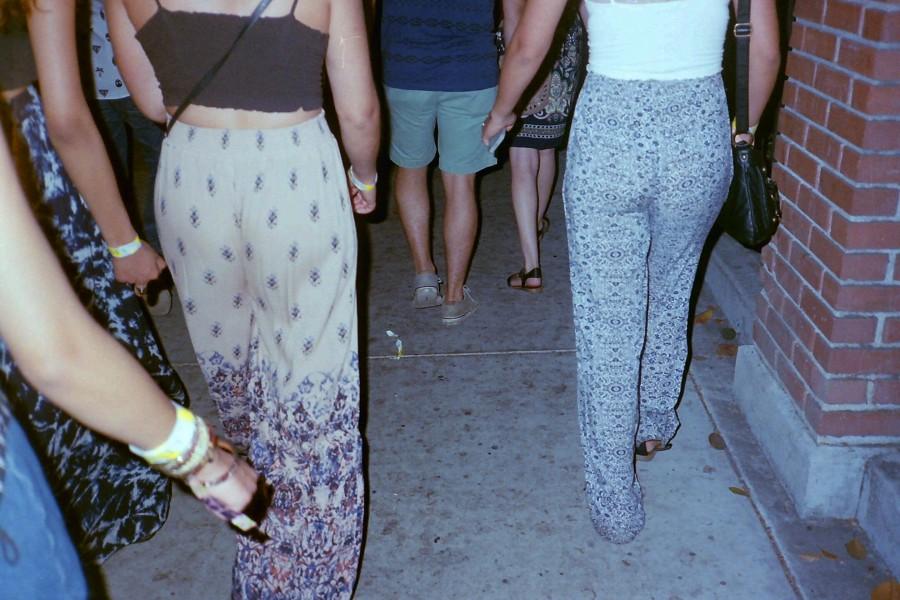What you wear to Coachella matters more
The common bohemian-hippie pants with the balance of a lose, fitted and thin fabric has risen in popularity at music festivals. Photo credit: Richard Lomibao
May 12, 2015
I remember seeing clips of Woodstock on MTV when I was growing up. Everyone looked like a hippie and shared a raw passion for the musical skill that performers like Jimi Hendrix showed off. More surprised by the moment, not predicting what’s to come, live music amplified the experience and audiences responded with emotion — starting massive fires in fields of people and sliding in mud. It seemed like a wild and free time for music that was breaking ground by grabbing the viewer’s attention and it depended in what you saw and heard.
With music festivals now such as Coachella, people are buying $375 tickets for a three-day festival, and are inclined to spend even more on what they’re wearing than be somewhere they’re suppose to be. This idea of liberation, “Whether it’s in the Sahara tent or under the shade of a VIP palm tree, people come to Coachella to find their tribe, and to be their ideal, liberated selves,” according to an article Fader put out about the fashion standards at festivals. Being free and away is getting mixed into the world of Instagram, which raises the question: what about the music?
Just because you sport the standard doesn’t mean your bohemian-floral printed scheme makes you an admirer of music. What it proves is your ability to mix into a crowd stealth-fully disguising your true colors.
With Snapchat and Instagram running the lives of people’s actions, it’s difficult to fully understand people’s motives. I attended weekend two of Coachella. It being my first time, I knew going in that there would be a lot of this going on.
I don’t affiliate myself with a style that is pushing boundaries, either; I’m a simple dresser and more about comfort and neutral color tones. What I observed was the hugest high school lunch cafeteria you can imagine, where you’d see people in groups, with the gypsies in the open field dancing and the stoners laying out by the Heineken tents — staying close to the people they came with, all cohesive in style.
I was fortunate to see Tyler, The Creator’s set. It validated my whole preconceptions about this misguided population of festival-goers when he shouted on the microphone in front of the audience at the Outdoor Stage, “F**k Coachella!”
Known to say whatever is on his mind, it wasn’t because he was having a bad time, that’s what he honestly felt. In a followup radio interview with Big Boy’s neighborhood, he said, “People don’t do things to enjoy it, they just want to put it on the Internet to feel some type of importance or some weird instant gratification. … Coachella sucks. … People go to Coachella just to say that they’re at Coachella.”
Not that I’m against someone who is open to spontaneous rounds of fun, it’s just like going to a club Downtown — you don’t go to drink water and talk to no one. You know they’re going to play remixes, disguising it with some predictable up-tempo drum beat to ensure you’re dancing your ass off and girls are going to dress up showing as much of their body as they can. Unlike club music, for most artists performing at these music festivals, there’s so much involved into how they end up on the stage before you.
Doing your research on making sure you resemble someone who listens to Drake or some girl who wears a gypsy costume (starting a face-off against the typical hippie) doesn’t matter. With clothing lines coming out with looks to enhance your Coachella experience, it’s giving in too much to the cause of being someone that they imagine you to be — a desert psychedelic adventurer or a girl with an oversized sun hat. Apparel coming from places such as H&M and Forever 21 has the ability to convert someone who hasn’t even thought about making a plan to go to Coachella, finding themselves comfortable to pull whatever is off the mannequin and buy a ticket because it’d be waste not to.










